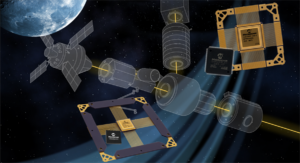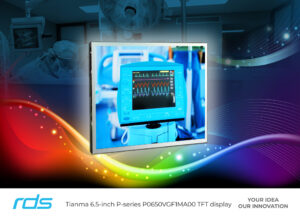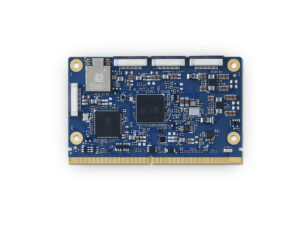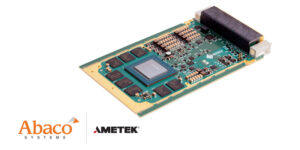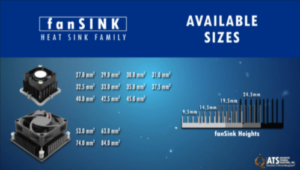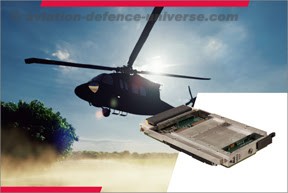Silicon Designs, Inc. announced the global market launch of the Model 1527 Series, a family of miniature, radiation-tested, tactical-grade MEMS inertial accelerometers. Offered in three standard full-scale acceleration ranges, of ±10 g, ±25 g, and ±50 g, respectively, the Series is expressly designed to support a variety of critical space electronics testing requirements, including those […]
Aerospace and Defense
Specifying MCUs for satellites and spacecraft
There is not a single group of standards but a continuum of qualification criteria for the components and systems used in satellites and spacecraft (Figure 1). With the growth of low earth orbit (LEO) satellites where the environment is less demanding and where some satellites are expected to be replaced regularly with upgraded designs, the […]
Versatile 6.5-in TFT display modules offer high optical performance
Display solutions and Review Display Systems (RDS) announced the availability of a new Tianma 6.5-inch TFT display module. The P0650VGF1MA00 features SFT (Super Fine TFT) technology which ensures exceptional optical performance, a 4:3 classic aspect ratio, and VGA (640 x 480 pixels) resolution. Tianma P-series displays are designed to provide reliable and consistent operation when […]
Qualcomm QRB5165-based AI-on-module designed for robotics and drones
ADLINK Technology Inc. released the LEC-RB5 SMARC module –its first SMARC AI-on-Module based on a Qualcomm Technologies, Inc. processor. The Qualcomm QRB5165 processor is designed for robotics and drones applications and integrates several IoT technologies in a single solution. The LEC-RB5 SMARC module provides on-device artificial intelligence (AI) capabilities, support for up to 6 cameras, […]
3U VPX high-performance computer follows VITA 65/SOSA standards
Abaco Systems announced the GRA115S available as a rugged 3U VPX VITA 65 or as a high-performance computer (HPC) form factor with a graphics output board and designed to align to the SOSA standard. This HPC reflects the market need for ever-increasing performance and delivers the latest in innovation to the rugged military and aerospace […]
Security technology built into MIL-STD-1553 interface
Abaco Systems announced the release of 1553Guard, a new security technology for MIL-STD-1553-based systems which provides an additional layer of protection against cyber-attacks. 1553Guard is an integrated solution which is directly built into the 1553 interface. Other technologies require expensive hardware and significant software modification but may not include threat mitigation. Abaco’s “plug-and-play” device detects […]
Embedded MXM graphics modules build on NVIDIA Ampere architecture
ADLINK Technology Inc. introduced the industry’s first embedded MXM graphics modules based on the NVIDIA Ampere architecture, built for accelerated computing and AI workloads at the edge. The new embedded graphics modules deliver real-time ray tracing, AI-accelerated graphics, and energy-efficient AI inference acceleration in the compact mobile PCI express (MXM) form factor. These modules enhance responsiveness, precision, […]
eFPGA block tools enable fast designs on UMC 22-nm process
QuickLogic Corporation announced the availability of its first customer-defined eFPGA block from the Australis IP Generator for the UMC 22nm process. The Australis tool enables rapid eFPGA IP generation for nearly any foundry and node. This eFPGA IP core is available now, and any future customizations of it for companies using this same foundry/process node combination can […]
Heat sinks accommodate wide range of FPGAs, ASICs
Advanced Thermal Solutions, Inc. now provides fanSINKS heat sinks for component sizes ranging from 27mm to 70mm square. The wider size range accommodates hot semiconductor components, including FPGAs, ASICS, and other package types used in telecomm, optics, test/measurement, military, and other applications. ATS fanSINKS features cross-cut, straight aluminum fins. They support omnidirectional airflow for optimum […]
Rugged 3U OpenVPX processor module provides hardware-accelerated graphics
Curtiss-Wright’s Defense Solutions has announced the latest addition to its portfolio of DO-254 / DO-178C safety certifiable commercial off the shelf (COTS) products with the introduction of the V3-717, a rugged 3U OpenVPX high-performance graphics processor module. Expanding Curtiss-Wright’s support for the modular open system approach (MOSA), the V3-717 adds hardware-accelerated graphics with video encode/decode hardware acceleration […]

